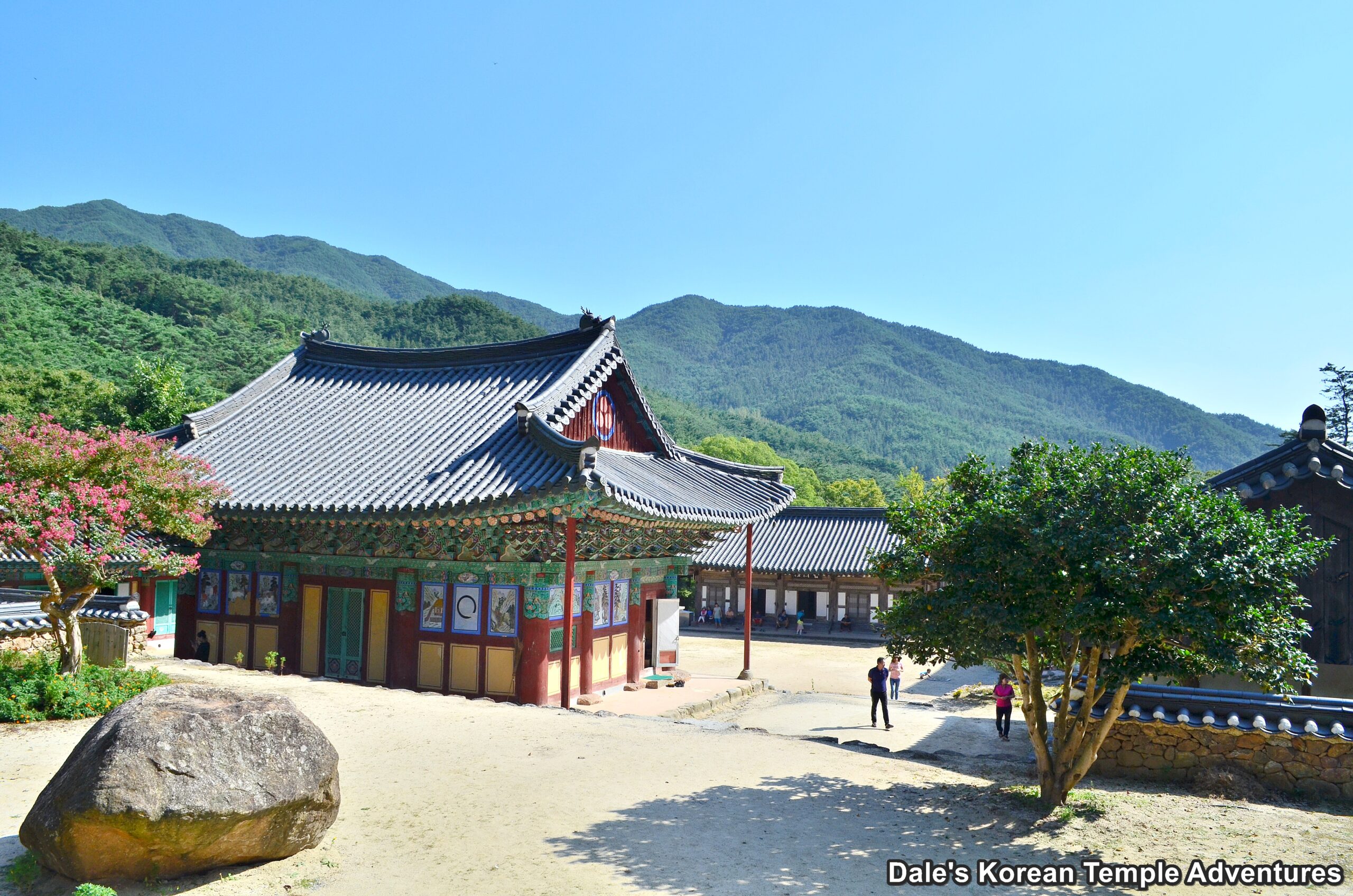
Temple History
Cheoneunsa Temple is located northwest of the famed Hwaeomsa Temple in Gurye, Jeollanam-do. Cheoneunsa Temple is one of the three major temples located inside Jirisan National Park grounds alongside Ssanggyesa Temple and the aforementioned Hwaeomsa Temple.
Cheoneunsa Temple, which means “Hidden Spring Temple” in English, was first founded in 828 A.D. Cheoneunsa Temple was founded by an Indian monk named Deokun. At this time, the temple was known as Gamnosa Temple. It was called Gamnosa Temple because of the spring water that people could drink from in front of the Geukrakbo-jeon Hall. Purportedly, this spring water could clear your mind because it was both clean and cold like the morning dew. That’s why, in English, Gamnosa Temple means “Sweet Dew Temple.”
Throughout the years, Cheoneunsa Temple has been rebuilt numerous times. The first of these reconstructions took place in 875 A.D., when the famed monk Doseon-guksa rebuilt the temple. During the Goryeo Dynasty (918-1392), specifically during the reign of King Chungnyeol of Goryeo (r. 1274-1308), Cheoneunsa Temple was picked as the best temple in the southern part of the Korean peninsula. The temple was later destroyed during the Imjin War (1592-1598). The temple was later rebuilt in 1610 by Hyejeong-seonsa. In 1679, the temple was made bigger by the monk Danyu-seonsa. Once more, Cheoneunsa Temple was destroyed by fire in 1773. The temple was rebuilt in 1775 by the monk Hyeam-seonsa. It’s from this time period that the majority of temple buildings date back to like the Geukrakbo-jeon Hall, the Palsang-jeon Hall, the Iljumun Gate, and the Chilseong-gak Hall. Currently, Cheoneunsa Temple is home to some twenty buildings.
There is an interesting myth attached to Cheonunsa Temple around the time of the Imjin War. While the temple was being rebuilt after being destroyed by the invading Japanese, a serpent/dragon often appeared around the temple’s spring, blocking the spring water from flowing. To stop this from continuing, a temple monk killed the large serpent/dragon. It was at this time that the temple changed its name from Gamnosa Temple to its current name of Cheoneunsa Temple. Cheoneunsa Temple means “Hidden Springs Temple” in English. However, the temple continued to be plagued by several fires. The townspeople said that this was happening because the monk had killed the serpent/dragon who had been protecting the energy of the water. One day, the famous master calligrapher Lee Gwangsa passed by Cheoneunsa Temple and heard the story about the serpent/dragon’s death. So Lee Gwangsa wrote a plaque that said “Jirisan Cheoneunsa” on it. The writing was written to look as though water was flowing down from it. Lee Gwangsa told the temple monks that if they placed this plaque on the Iljumun Gate then fire would no longer break out at the Cheoneunsa Temple. And ever since then, strangely, not a single fire has broken out at Cheoneunsa Temple.
In total, Cheoneunsa Temple is home to five Korean Treasures. And admission to the temple is 1,800 won for adults.
Temple Layout
After arriving at the temple parking lot, you’ll make your way up a long trail that leads you past the rather slender Iljumun Gate. Hanging a left, you’ll hug the neighbouring Cheoneun Stream. This stream flows in and out of the beautiful Cheoneun Water Basin that’s located out in front of the temple grounds. On the other side of the still flowing stream, the stream will eventually lead you towards a bridge that spans the Cheoneun Stream. Located on this bridge is the quaint Suhong-ru Pavilion.
Having passed by the Suhong-ru Pavilion, you’ll next see the Cheonwangmun Gate. Inside the Cheonwangmun Gate are four modern statues of the Four Heavenly Kings. These fierce statues protect the temple from evil spirits from entering the temple grounds. Emerging on the other side of the Cheonwangmun Gate, you’ll see the Jong-ru (Bell Pavilion) to your right. Standing all alone in the open courtyard between the Cheonwangmun Gate and the Boje-ru Pavilion is a modern Seokdeung (Stone Lantern).
To the right of the Boje-ru Pavilion is a set of stairs that will gain you admittance to the main temple courtyard at Cheoneunsa Temple. Straight ahead of you is the Geukrakbo-jeon Hall. The exterior walls to the main hall are adorned with beautiful, yet simplistic, Shimu-do (Ox-Herding Murals). As for the interior, and resting on the main altar, are a triad of statues centred by Amita-bul (The Buddha of the Western Paradise). This statue is joined on either side by Gwanseeum-bosal (The Bodhisattva of Compassion) and Daesaeji-bosal (The Bodhisattva of Wisdom and Power for Amita-bul). This main altar triad is backed by a beautiful altar mural, or “Taenghwa” in Korean. In this mural, Amita-bul is seen leading the spirits of the dead towards an easy passage towards the afterlife. Amita-bul is giving a sermon in the Western Pure Land of Ultimate Bliss. The painting stands 360 cm tall and 277 cm wide, and it was first painted in 1776. The mural is also Korean Treasure #924. Joining this altar mural inside the Geukrakbo-jeon Hall is the Buddhist Painting of Cheoneunsa Temple. In this painting, three Bodhisattvas are seen ruling over three realms. These types of paintings started to be produced in the 16th century. Interestingly in this painting, each of the names of the Bodhisattvas and figures in the painting are listed. Like the altar mural, this mural was first painted in 1776, and it’s Korean Treasure #1888.
To the right of the Geukrakbo-jeon Hall is the Myeongbu-jeon Hall. Housed inside this temple shrine hall is a green-haired statue of Jijang-bosal (The Bodhisattva of the Afterlife) on the main altar. This statue is joined by ten stoically seated wooden statues of the Siwang (The Ten Kings of the Underworld). These statues are then backed by ten intricate murals dedicated to the Siwang. Rather surprisingly, the typically illustrated exterior of the Myeongbu-jeon Hall at Cheoneunsa Temple are rather plain.
Through a pathway that’s located between the Geukrakbo-jeon Hall and the Myeongbu-jeon Hall, and up a flight of stone stairs, you’ll find yourself squarely standing in the upper courtyard at Cheoneunsa Temple. Here you’ll find four additional temple shrine halls. The first to the far right is the Eungjin-jeon Hall. Sitting on the main altar is a statue of Seokgamoni-bul (The Historical Buddha). Joining this main altar statue inside the Eungjin-jeon Hall are sixteen modern statues and vibrant paintings dedicated to the Nahan (The Historical Disciples of the Buddha).
To the left of the Eungjin-jeon Hall is the temple’s Palsang-jeon Hall. Housed inside this shrine hall are eight murals, the Palsang-do (The Eight Scenes from the Life of the Buddha Murals), that are beautifully executed. This type of hall is a bit rare, and is typically only found at larger temples like Beopjusa Temple in Boeun, Chungcheongbuk-do and Beomeosa Temple in Geumjeong-gu, Busan.
And to the left of the Palsang-jeon Hall, second from the left, is the Gwaneum-jeon Hall. Housed inside this hall is an extremely ornate statue dedicated to Gwanseeum-bosal (The Bodhisattva of Compassion). This golden incarnation of the Bodhisattva of Compassion, with its thousand arms, is truly something to behold. And book-ending the set to the far left is the temple’s Samseong-gak Hall. Each of the three entryways has the name of the individual shaman deity that the shaman shrine hall houses inside it. The far left entry and painting inside is dedicated to Sanshin (The Mountain Spirit). The central entry and painting inside is dedicated to Chilseong (The Seven Stars). And the final entry to the right houses a painting dedicated to Dokseong (The Lonely Saint) inside.
Of note, and at the back of the temple grounds, there are carved Hanja characters that read “Monument of the Mountain King.” Before there were paintings or even statues dedicated to Sanshin, there were these rock shrines dedicated to the Mountain Spirit. While extremely hard to find at temples nowadays, Cheoneunsa Temple is one of these rare temples that still has this outdoor shrine dedicated to Sanshin.
How To Get There
From the Gurye Intercity Bus Terminal, you can take a bus directly to Cheoneunsa Temple. The bus that goes to the temple from this terminal leaves six times a day. There is a schedule at the bus terminal that will tell you the exact time; but roughly, they are: 8:35 a.m. / 10:00 a.m. / 12:20 p.m. / 2:10 p.m. / 4:10 p.m. / and 5:30 p.m.
And if you want to visit the neighbouring Hwaeomsa Temple first, you can simply take a taxi to get to Cheoneunsa Temple (or vice versa). The ride takes about 15 minutes, and the taxi fare, depending on traffic, should cost about 8,000 won.
Overall Rating: 7.5/10
Often overshadowed by Ssanggyesa Temple and Hwaeomsa Temple, the two more popular temples inside Jirisan National Park, Cheoneusa Temple is both beautiful and cozy in its own right. With numerous shrine halls like the spectacular Geukrakbo-jeon Hall and the set of four shrine halls in the upper courtyard, you should make time for this lesser known temple. In addition, you can look for the Sanshin stone shrine to the rear of the temple grounds or be intimidated by the Four Heavenly Kings inside the Cheonwangmun Gate. Either way, there’s more than enough to keep you busy at the beautiful Cheoneunsa Temple in Jirisan National Park.
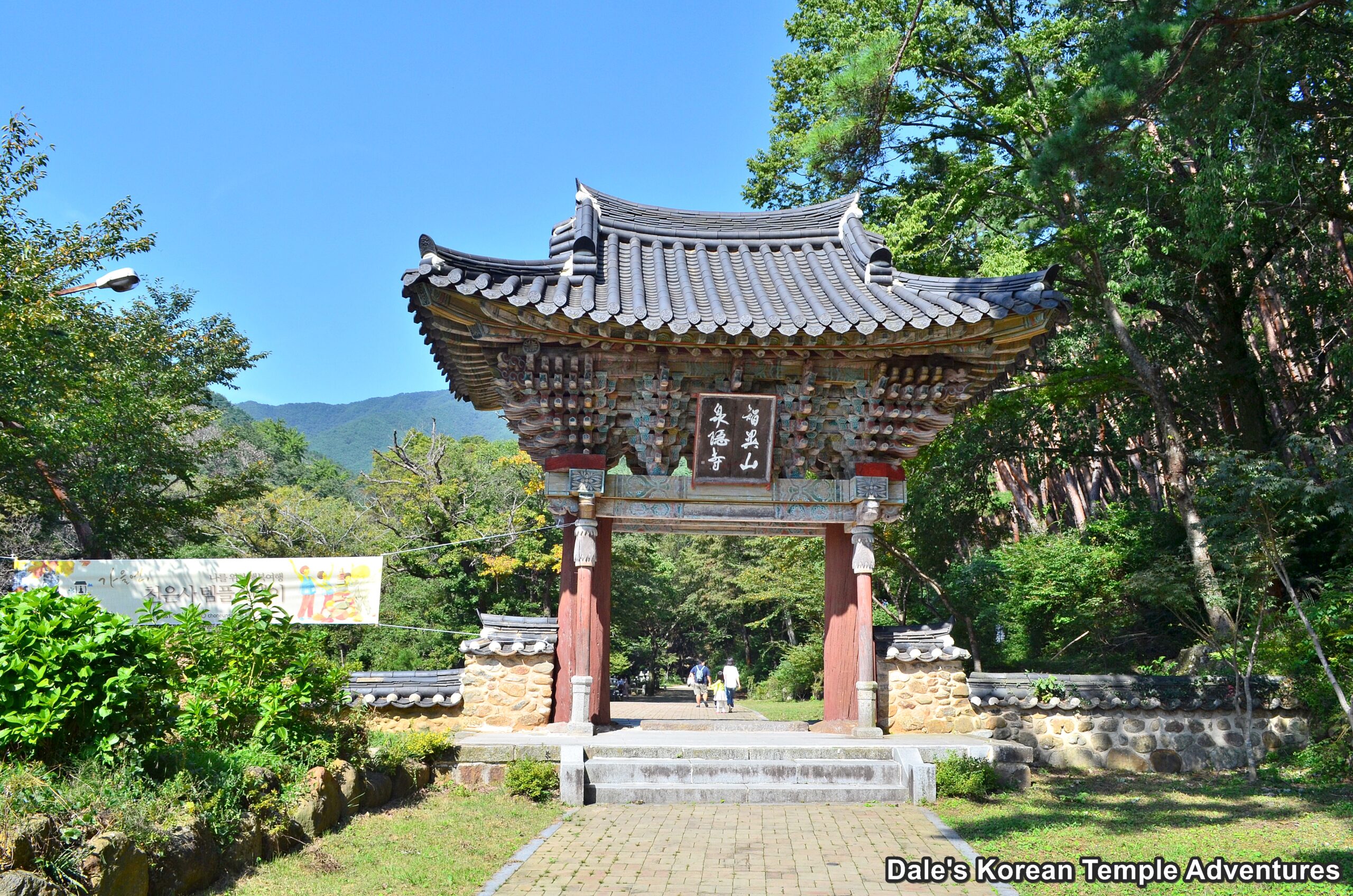
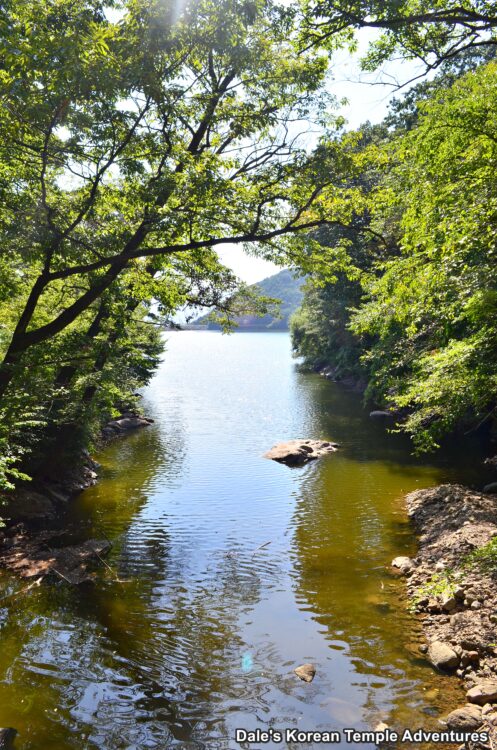
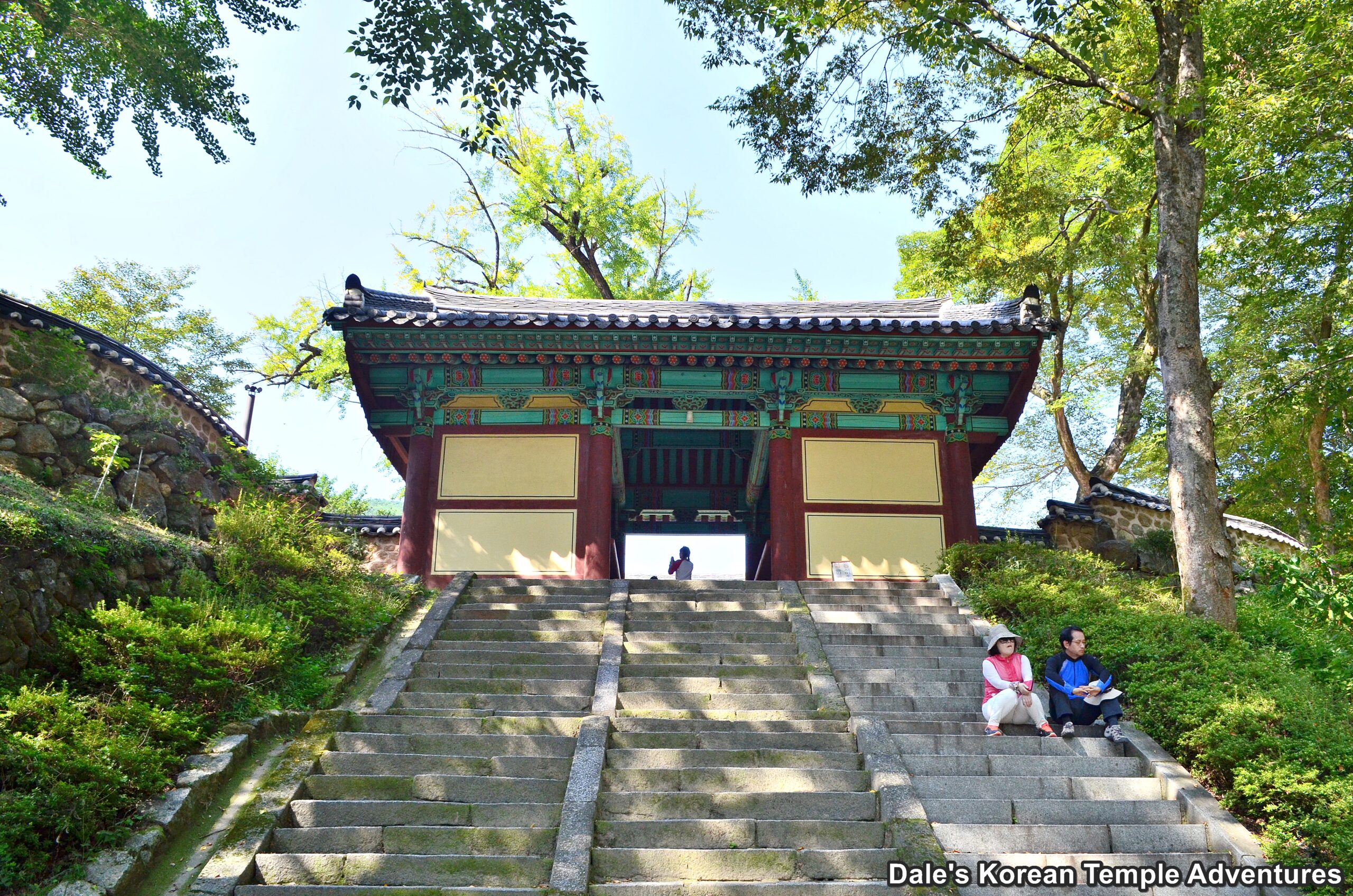

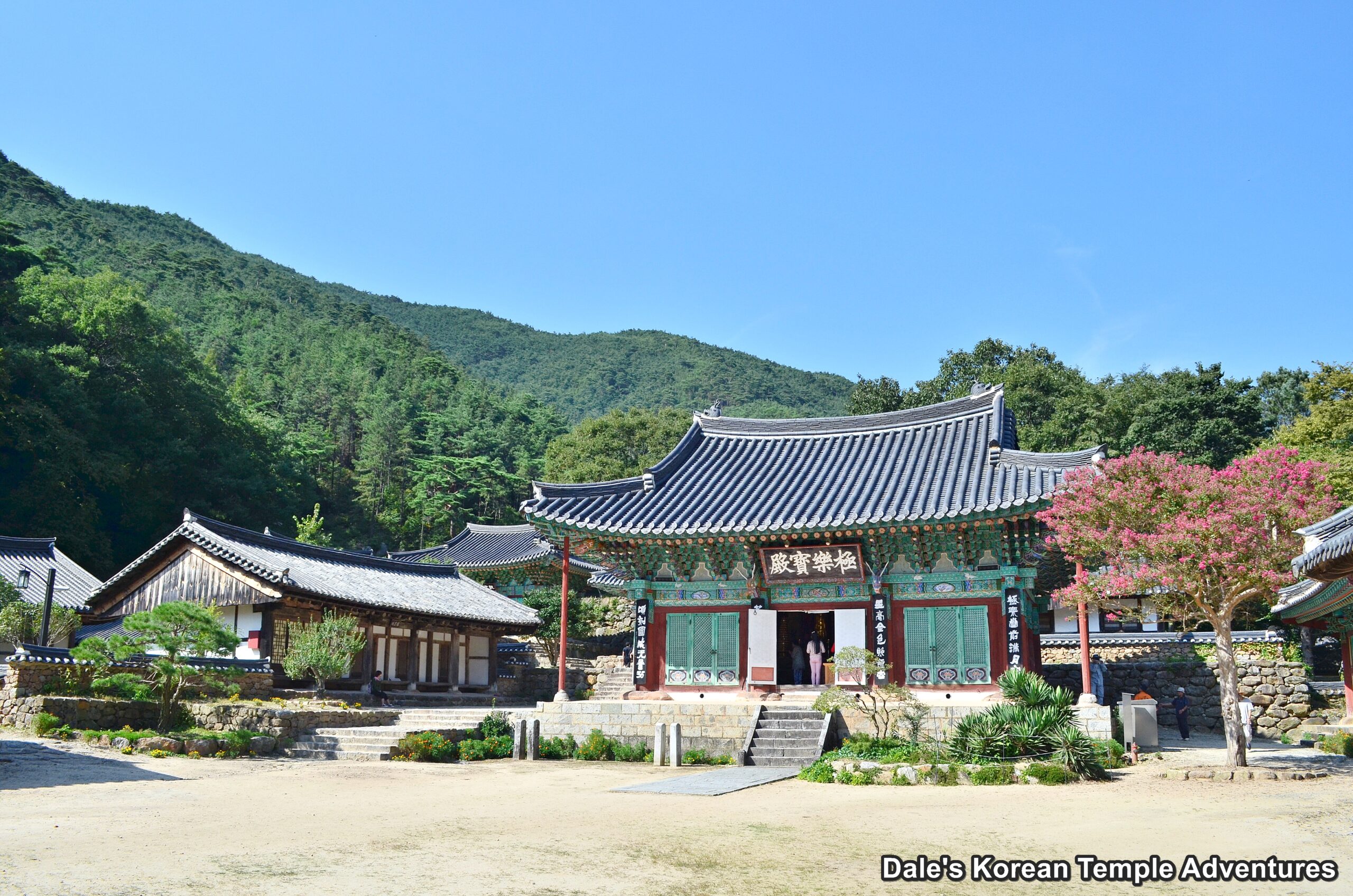
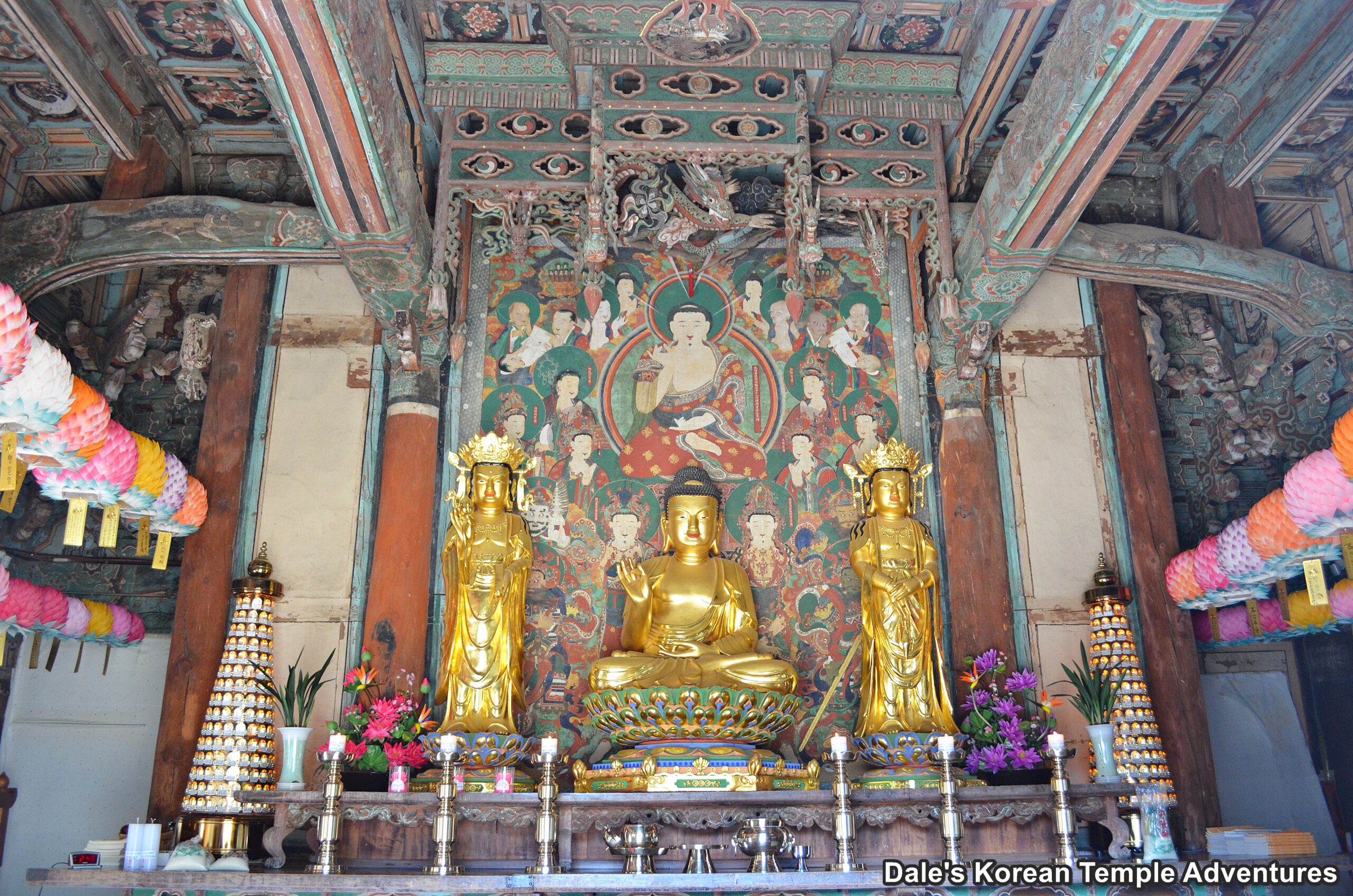
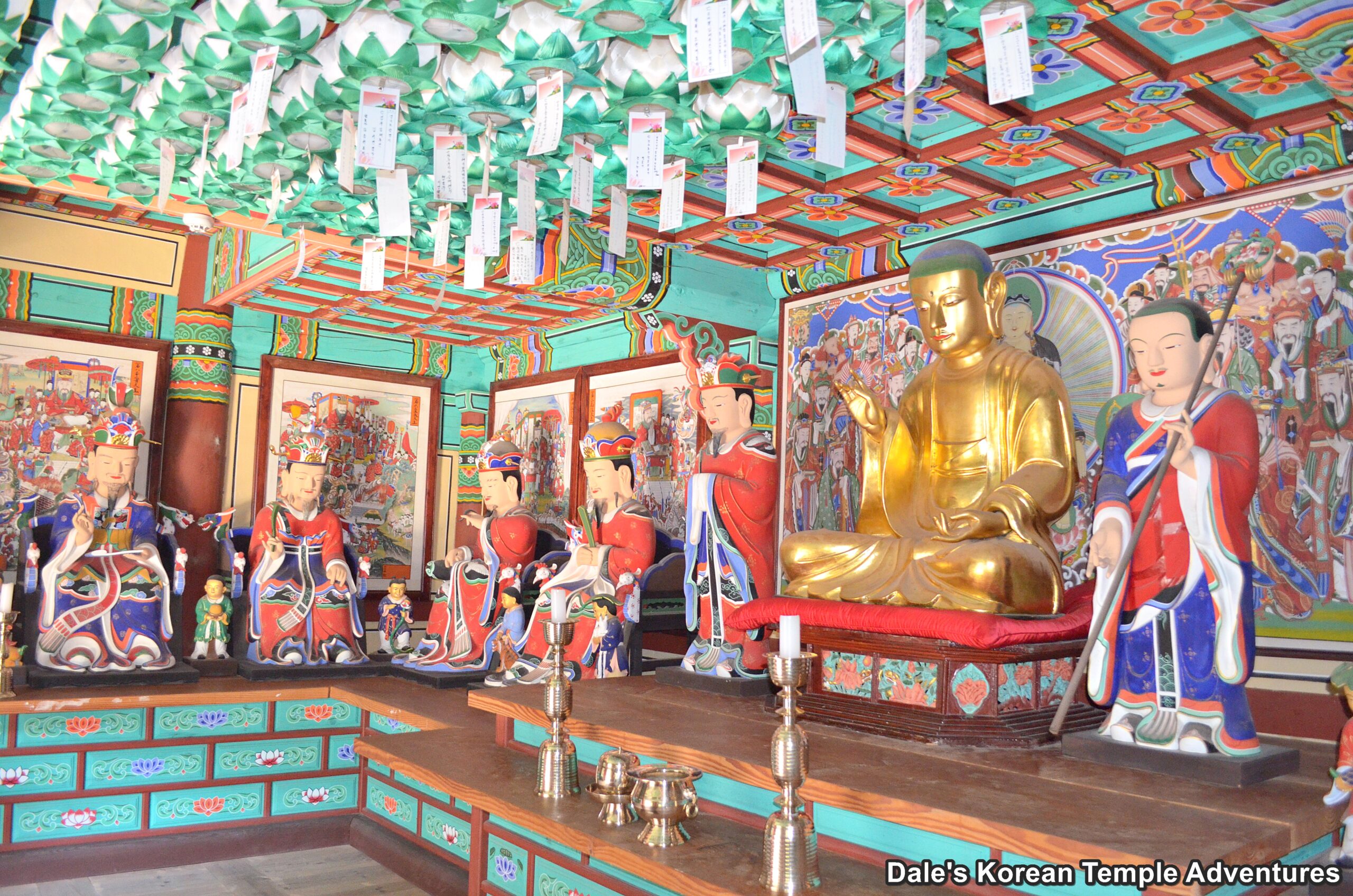
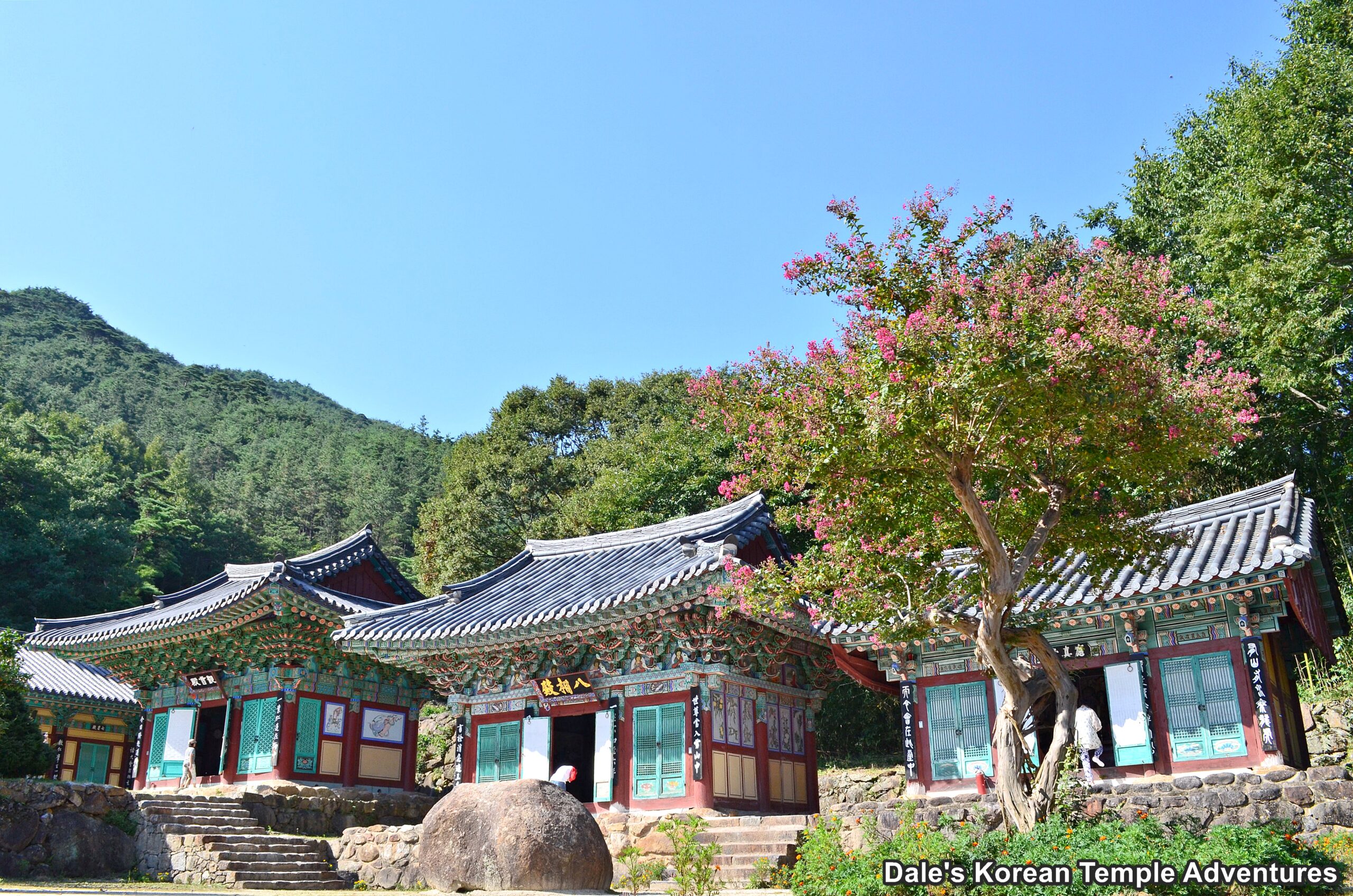
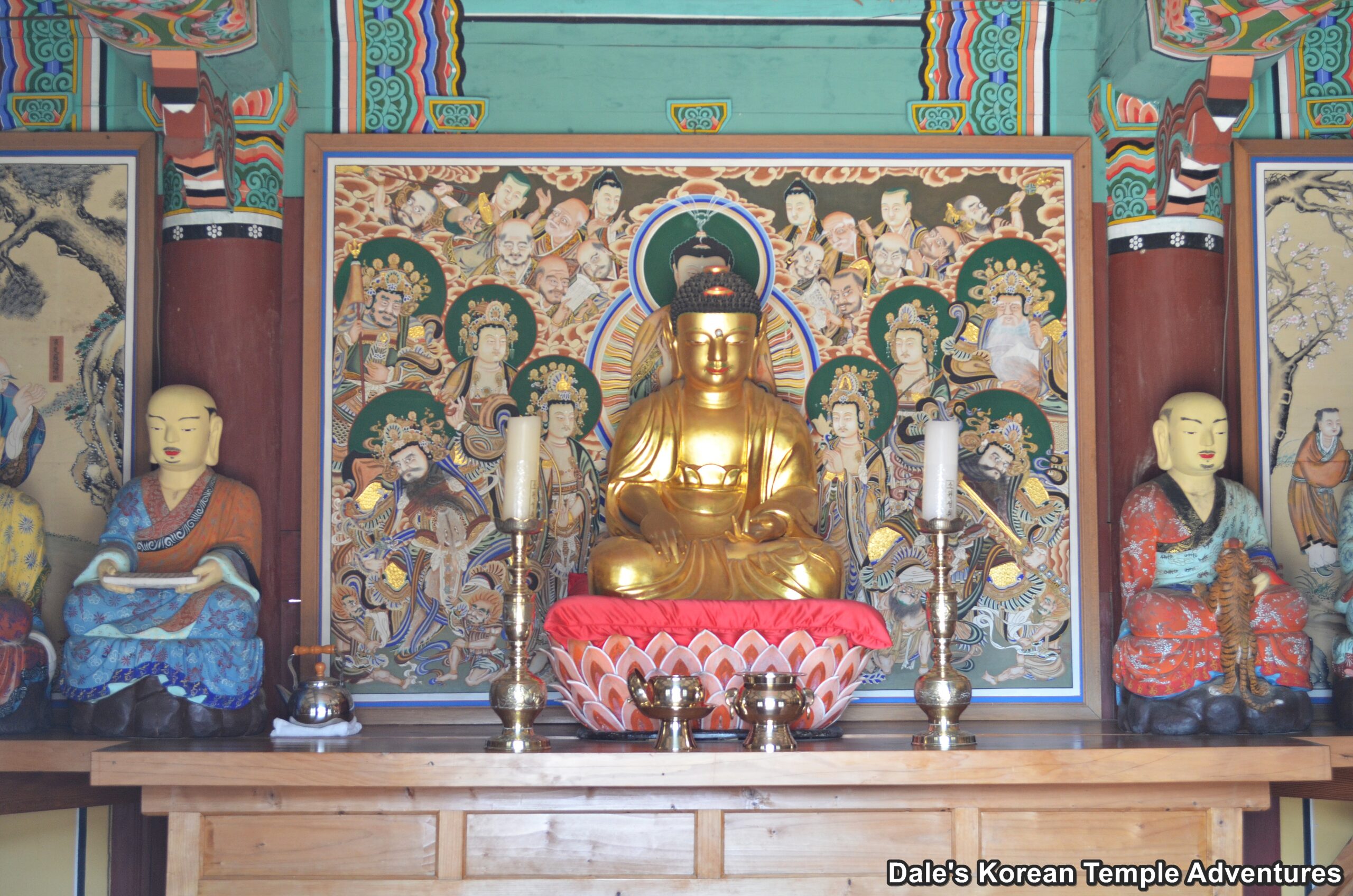
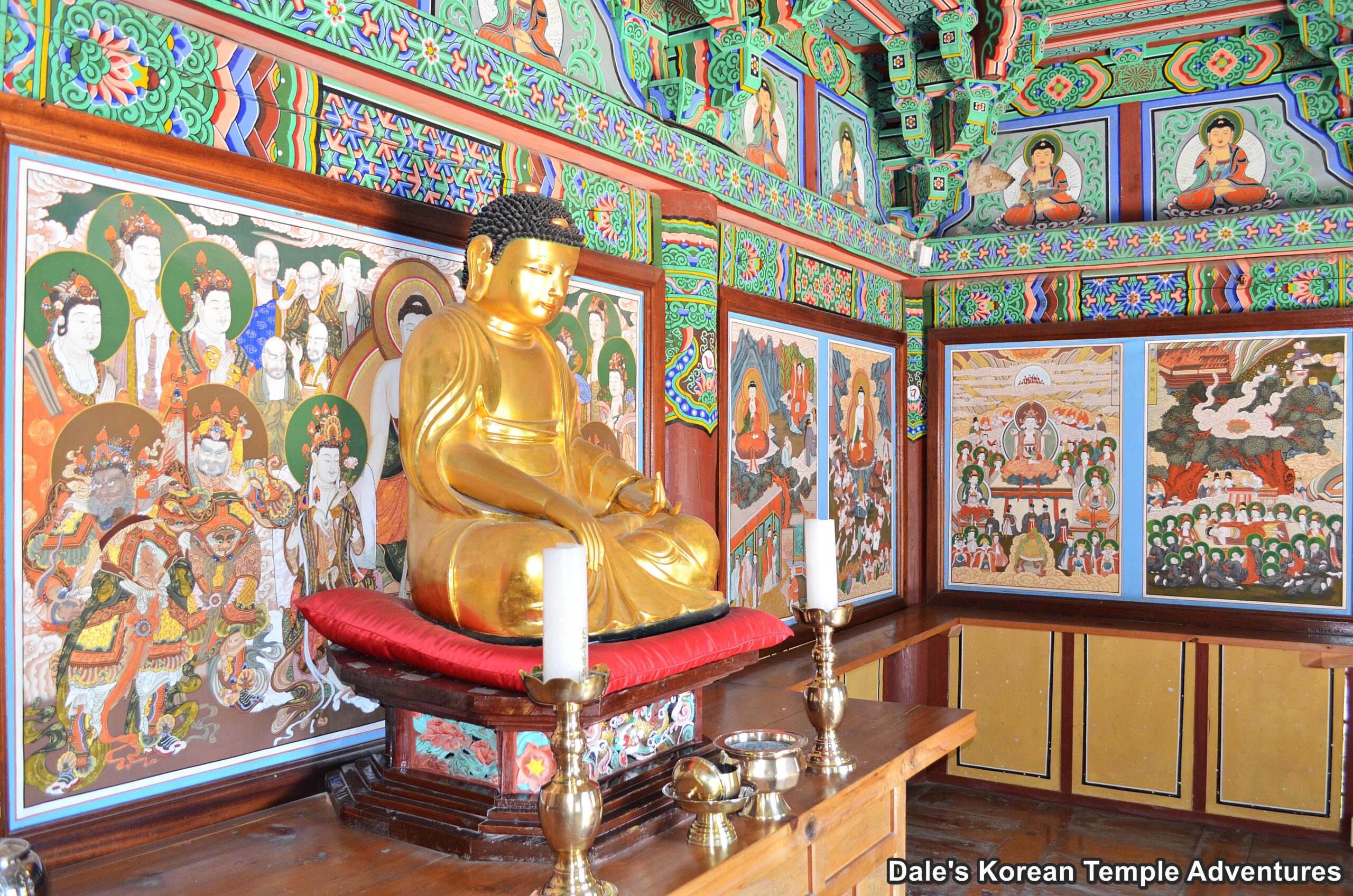
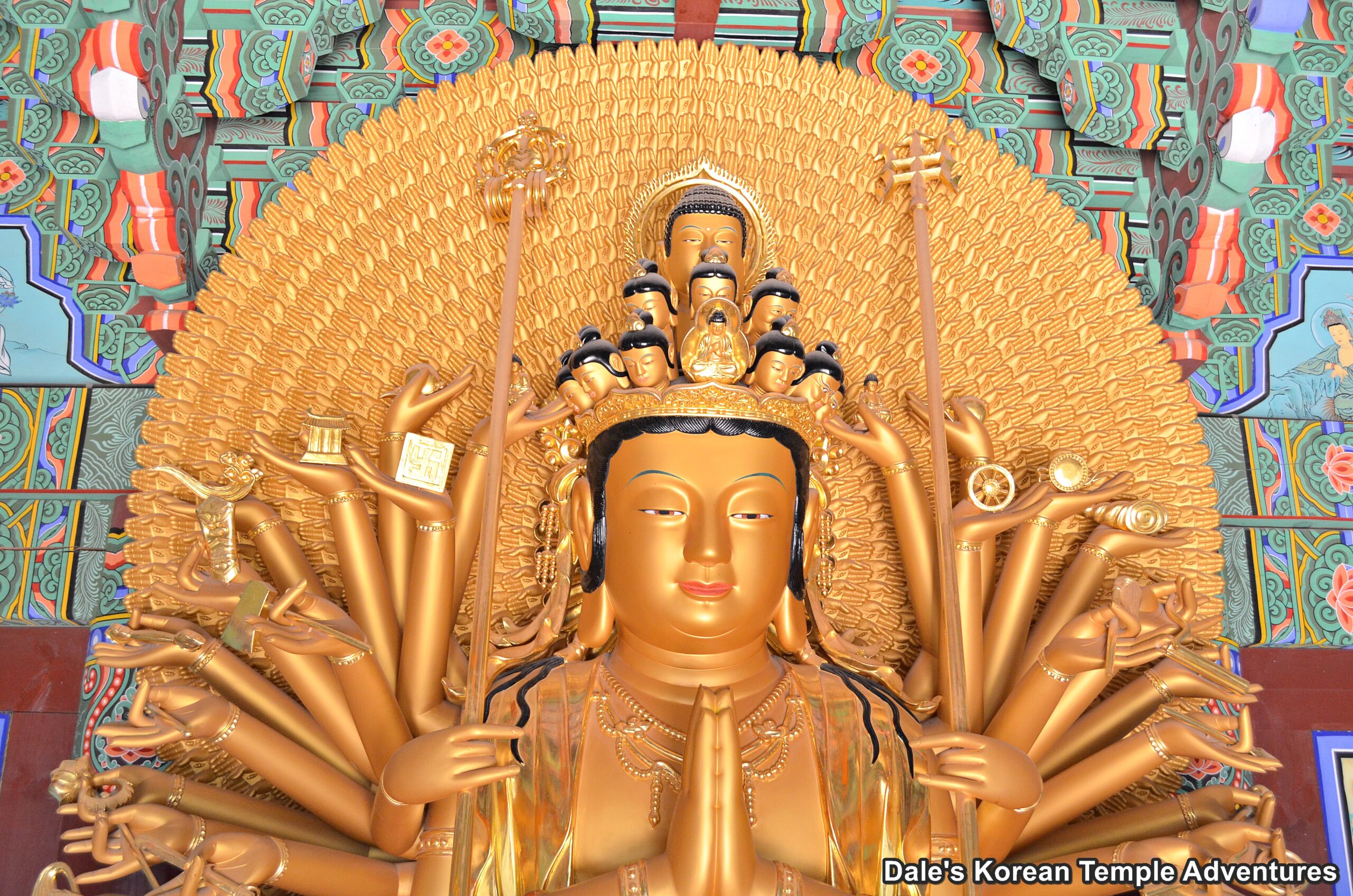


Recent comments